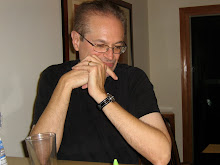
Quote of the day:
“If you can’t stand to be alone with yourself, why do you inflict yourself on us?”
--Carl Jung
If you’re familiar with "The New Yorker," you know that they publish one short story in each issue. I was quite taken by Antonya Nelson’s story "Kansas," which appeared in the September 4, 2006 issue. It describes a family coping with a problem-plagued adolescent who disappears with her young niece. The story says this about the psychologist father of the adolescent:
“He’d never grown accustomed to thinking of [his daughter] as a criminal, even when she’d been arrested and charged, found guilty and made to pay--this despite the fact that he made his living hearing how people were routinely failed by their loved ones.”
This is such an eloquent way of describing the difference between “inside” and “outside” views of criminal behavior. The “outside” view is on display in the reality show “Cops,” which shows incident after incident of people behaving illegally (and sometimes bizarrely) and being arrested for it. We learn little about where these people came from or who their family is. We do know that they’re going to jail.
There is so much crime news and TV programming available to us. Today, in fact, we’re hearing about the third school-shooting incident in the last week. We watch all this criminal behavior and may begin to unreasonably (or irrationally) classify or dismiss such people as “bad,” “crazy,” or “evil.”
Similarly, family members or friends of those arrested may unreasonably (or irrationally) deny that the behavior happened.
As always, the truth resides somewhere in the middle of this.
Monday, October 2, 2006
Perpetrators: Inside and Outside
Labels: Legal System
Subscribe to:
Post Comments (Atom)






No comments:
Post a Comment